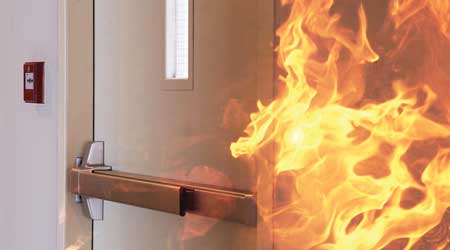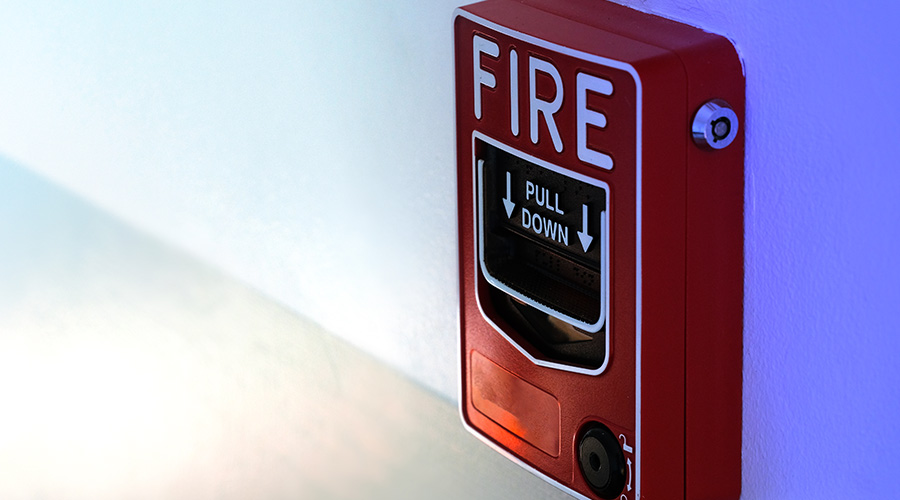3 Fire Safety Myths: How Will Occupants React?
In a perfect world, occupants will always follow directions. In the real world, that rarely happens. Know these fire safety myths about occupant behavior to better prepare.
In the event of a fire in a facility, many facility managers believe occupants will always follow fire safety protocol to the letter. But in reality, there are widely held false beliefs. These myths can come from history, past events, or maybe how things are portrayed in the media. The topic of building fire safety is no different. These myths can confuse building stakeholders who are responsible for ensuring a building is safe from fire and contribute to flawed design decisions or installations. Here is a look at three common myths that relate to how occupants might react to building fire safety, and what can be done to decrease the risk of fire in a building.
1. People will always follow the exit signs during an emergency.
Occupant response during fire emergencies is influenced by a variety of factors including occupant characteristics, building characteristics, and the fire itself. One important occupant characteristic is familiarity with the building. During a fire emergency, it is often assumed that people will always make an efficient evacuation and follow the exit signs to the nearest exit. In reality, not all building users are familiar with the building. When occupants are egressing a building during an emergency, it is unlikely that they will be prepared to try a route they have never used before to leave the building. In fact, it is more likely they will attempt to leave by the route they entered the building.
Installing exit signs does not always ensure that occupants will notice the signs or will use them. However, if their familiar route out of the building is judged impassable due to conditions such as smoke or fire, then occupants might rely on exit signs to find an alternative way out.
Building stakeholders can increase the probability that people will follow exit signs by providing staff training on the building’s emergency plan, conducting regular exit drills, and ensuring exit signs are highly visible so they can easily be noticed by occupants.
2. People panic during fire emergencies.
Another common myth about how people respond during fire emergencies is the assumption that, during a fire, the occupants will panic. Those in the news media and Hollywood appear to be fond of this concept for its drama and sensationalism. Fortunately, it is a misconception to believe that people will try to flee in a stampede, crushing and fighting others to get to a place of safety. In reality, people appear to apply rational decision-making during fire emergencies. Despite this fact, following fire events, victims themselves commonly mention that they panicked during the incident. In these cases, the word “panic” indicates that they were frightened, scared, nervous, or anxious; usually it does not have the implication of irrational behavior.
It is important to understand that, although irrational behaviors are rare during building emergencies, it is nevertheless important to implement measures that reduce the stress on building occupants during these incidents. These measures include implementing an effective emergency plan, providing drills, and supplying timely information to occupants during emergencies.
3. People will always evacuate when the fire alarm activates.
Some building stakeholders believe that when a system is activated, people will automatically move to the nearest fire exit or place of safety. Although fire alarm and notification systems play an important role in life safety, studies have shown that unfortunately occupants often ignore a fire alarm signal. Why? There are four common reasons: Occupants fail to recognize the signal; they are unaware of the proper response; nuisance alarms decrease the credibility of the system; and occupants fail to hear the signal.
To ensure that a building’s fire alarm system is capable of performing its intended function, every stakeholder should ask the design team’s fire protection engineer five key questions when designing and constructing a new fire alarm and communication system:
- Is the best type of fire detection installed for the given application, and is it installed properly?
- Is occupant notification provided through voice communications?
- Can all building occupants hear and understand the evacuation signal/messages?
- Is the building’s emergency plan coordinated with the new fire alarm system?
- Does the system have an adequate inspection, testing, and maintenance program?
Chris Jelenewicz (chris@sfpe.org), PE, FSFPE, is technical director, Society of Fire Protection Engineers.
Related Topics:













